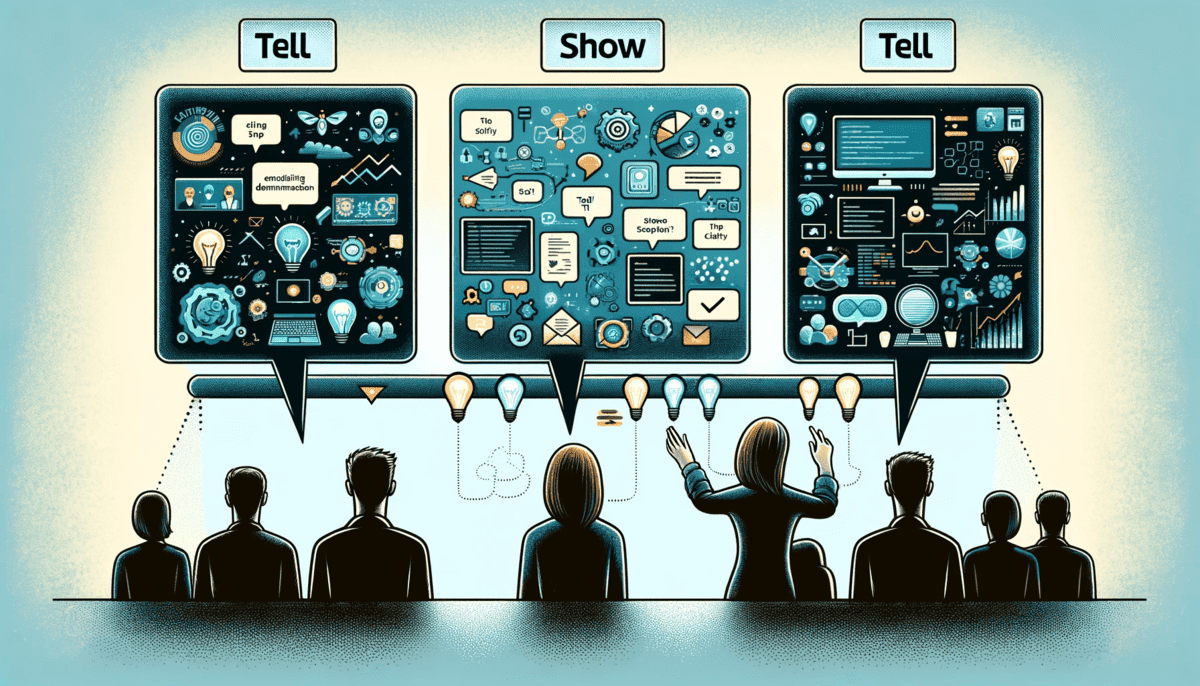
 Sometimes you feel like you can do everything right in the sales process but still somehow fail to close at your expected rate. What went wrong?
Sometimes you feel like you can do everything right in the sales process but still somehow fail to close at your expected rate. What went wrong?
The culprit could easily be your demo strategy. Many of the best software products fail to sizzle during a demonstration without the right preparation, attitude and sales knowledge. What could have easily been an amazing opportunity for both you and the lead gets squandered as a result of lackluster showmanship.
Here are just four of the most critical mistakes you could be making during your software demo that can quickly turn a hot lead into a wall of ice:
1. You Didn’t Structure Your Argument
Effective sales demonstrations utilize a repeatable framework that allows your audience to follow along, remember your most pressing points and recall differentiating factors. When you fail to structure your presentation in this way and just hit them over the head with umpteen bullet points, the message may miss its mark.
Start by trying to relate big picture ideas and categorizing your key take-home points. If you can put certain features and benefits under the umbrella of “accelerated customer complaint resolution,” for instance, do that instead of casually mentioning how such-and-such can improve resolution offhand.
2. You Weren’t Memorable
Anyone who has been to the movies lately knows the problem: an incredibly entertaining in-the-moment experience quickly becomes dulled by a lack of memorable scenes, moments or features. You go home that night and can’t even remember what the movie was about. In this way, many blockbusters are interchangeable these days, even if they have merits in their own right.
By contrast, the most effective stories stick around through being original and poignant. A little repetition for emphasis doesn’t hurt, either. Focus on making your story and demonstration memorable by combining familiar elements with the unexpected. Connect a pressing social issue to your solution by way of metaphor, or come up with a motivating concept that your audience can retain like “take control of your quality control process” long after the details fade away.
The more memorable you are, the easier the next point of contact will be should your lead move further down the sales funnel.
3. You Didn’t Differentiate the Solution Effectively
Our brains like to categorize things, so they can get a little frustrated when you ask it to stick something in the same category. “Ok,” it might say “how is this logistics system different than the market leaders?”
Your goal is to sell these critical differentiating factors as deal breakers. Your lead may like the leading logistics monitoring software for XYZ reasons, most but it doesn’t have this.
Integration within existing systems, self-service analytics and unique visualization tools are leading market differentiators these days, but let your own research and pre-sales work guide your pitch towards the most relevant details.
4. You Didn’t Engage Your Audience
Your audience will never hear a word you say if you fail to strike a chord with them. Usually the best approach is to humanize the problem your software solves on relative terms. Forego the “how many times has this happened to you?” schtick in favor of hard-hitting facts followed up by genuinely approachable scene setting.
Once the scene is set, you will have your audience hooked into what you are going to say next, making them far more receptive to your messaging and to the selling points of the software itself.
We recommend our own take on this approach with a “limbic opening” as described in our Demo2Win! sales demonstration workshops. This strategy engages our brain’s limbic system by providing a motivating context for the audience through a series of relatable scenes. Simply put, if they hear that you understand their problem and have a way to solve it, their own self-interest will keep them engaged while you deliver the more complex facts.
You can sign up for our live sales demonstration workshops today to start putting psychology and intelligent structuring into action to make your demos more successful than ever. Register your team for a course today!

Tell-Show-Tell: The Most Powerful Demo Technique
Tell-Show-Tell is one of the most powerful techniques a presenter can use in a software demo. This post is a conversation about Tell-Show-Tell...



